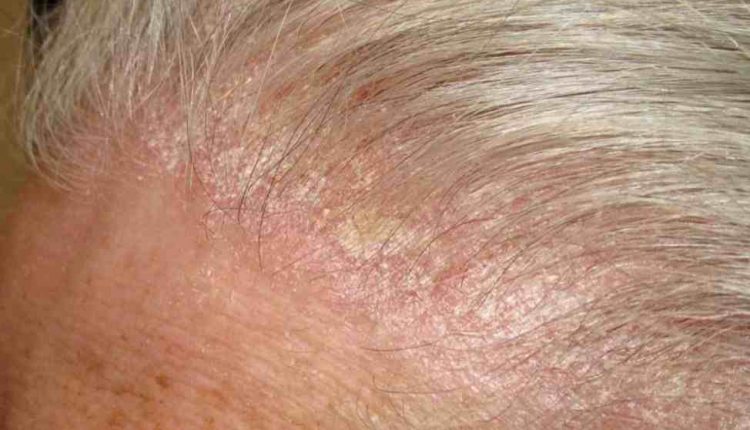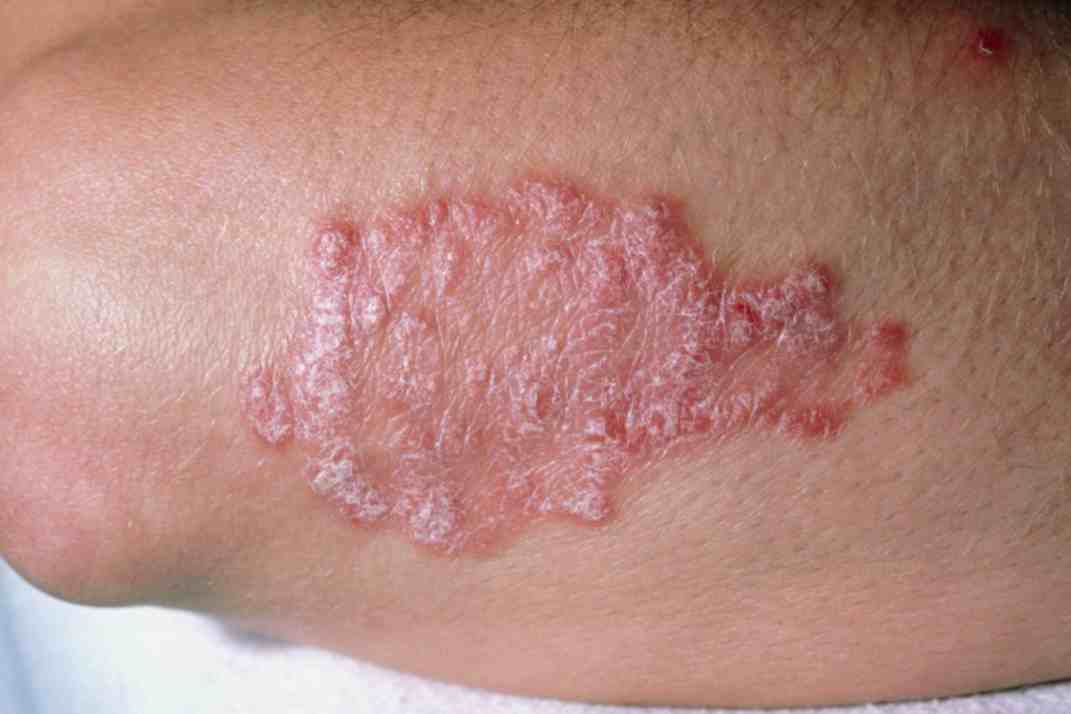
What are the different types of psoriasis?
Psoriasis is an inflammatory skin condition that can present in many ways. Different types of psoriasis can vary in severity, location, and form
There are a number of different types of psoriasis, which can vary in their severity, location on the body, and physical appearance.
Fortunately, there are many treatments available that can help.
Psoriasis is a skin condition that causes skin cells to form too quickly.
Because these grow faster than the body can shed existing skin cells, thick, scaly patches form.
On lighter skin tones, this condition usually appears as pink or red patches with silvery-white scales.
On darker skin, psoriasis is more likely to appear as purple patches with gray scales or as a dark brown color.
There are several types. Most types tend to be mild to moderate. However, some types of psoriasis can be severe
Types of the condition include:
- plaque psoriasis
- psoriasis of the scalp
- guttate psoriasis
- inverse psoriasis
- pustular psoriasis
- erythrodermic psoriasis
People with this condition may initially only develop one type, but can develop another type at a later point in time.
General symptoms
While a person’s symptoms will vary with the type they have, most people will experience some combination of:
- itchy skin
- burning, sore, or painful areas on the skin
- patches of thick skin with visible scales
- small scaly spots
- swollen or stiff joints
This means that they may increase in intensity at certain periods and lessen at others.
People refer to these periods of heightened symptoms as flares.
Flares can vary in severity and duration.
Plaque psoriasis
This type, also known as psoriasis vulgaris, causes areas of plaque buildup on the skin and is the most common form of condition.
Around 80-90% of people with this condition develop plaque psoriasis.
Plaque is a thickened area of skin.
On lighter skin types, it often has a white or silvery, scaled appearance, and on darker skin types it may appear as purple patches with gray scales.
Plaque psoriasis tends to be mild to moderate but can be severe.
Typically, mild plaque psoriasis covers less than 3% of the body, moderate plaque psoriasis 3-10%, and severe cases cover 10% or more.
Symptoms of plaque psoriasis vary from person to person
These symptoms can include:
- areas of dry skin lesions covered with silvery scales
- plaques that itch or burn
- problems that affect the nails
Areas of plaque may appear anywhere on the body but are most common on the knees and elbows.
Treatment
Treatment of mild or moderate type will vary depending on a person’s individual symptoms.
However, treatment will typically include the application of topical ointments to affected areas, and in some cases exposing the skin to ultraviolet light.
Scalp psoriasis
This type typically occurs on a person’s scalp.
However, it can also appear on the forehead, back of the head, down the neck, and behind the ears.
This is common among people with psoriasis.
A person with scalp psoriasis can have other types on other parts of their body at the same time.
Scalp psoriasis shares many symptoms with plaque psoriasis, but may also result in:
- patches of thick skin on the scalp
- dandruff-like flakes on the scalp
- itching and bleeding scalp
- a dry scalp
- temporary hair loss during flares
Treatments
Treatment often involves more than one method at a time.
As with plaque psoriasis, a doctor will tailor a treatment program to a patients’ needs.
Treatment options include:
- medicated shampoos and ointments
- UV light therapy
- injections
- scalp therapy
Learn more about the best shampoos for psoriasis here.
Guttate psoriasis
Guttate is characterized by red, purple, or dark dots and spots spread throughout the skin.
The dots and spots are not as thick as plaques in plaque psoriasis.
This type often starts in childhood or young adulthood and appears after an infection.
Symptoms
This type typically causes spots to appear on the legs, arm, and torso.
However, these may also appear on the face, scalp, and ears.
In severe cases, there may be hundreds of these spots, and they may cover the majority of an affected area.
Treatments
Doctors will typically recommend topical creams and ointments as the first step for treating guttate psoriasis.
These treatments may help reduce swelling and alleviate itching.
As the condition can appear following infections such as strep throat, a doctor may recommend antibiotics to treat the infection alongside addressing the psoriasis symptoms.
In some cases, they may also suggest a patient undergo light therapy.
Inverse psoriasis
This type appears as patches of discoloration that are most often found in the folds of the skin, such as in the armpits and groin.
People with the inverse type often have other forms of psoriasis elsewhere on their bodies.
Symptoms
On white skin, this condition presents as bright red or pink marks.
On black or brown skin it may appear as red, purple, or darker than the surrounding area.
Areas of the body that are most likely to be affected include:
- armpits
- groin
- under the breasts
- behind the knee
Treatment
The areas of the body that are most often affected by inverse psoriasis tend to have thinner skin than other areas.
This can make treating this type more difficult.
A doctor will typically recommend topical steroid ointments to reduce inflammation.
As skin folds are common sites of yeast infection, they may also suggest a person take anti-yeast and anti-fungal treatments as well.
Pustular psoriasis
This is a severe, rare type of psoriasis.
It causes widespread inflammation of the skin and white or yellow blisters that contain pus.
Symptoms
Pustular psoriasis blisters can be limited to one area of the body or appear more generally.
Once the blisters have gone away, the skin may become scaly.
A person may also experience:
- fever
- extreme tiredness
- muscle weakness
- other forms of inflammation throughout the body
A specific kind of this type called palmoplantar pustulosis causes blisters to form on the palms and soles of the feet.
These blisters form in a studded pattern.
Over time, the blisters turn brown and become crusty.
Treatment
Due to the rarity of the condition, there is a lack of evidence-based treatment guidelines.
As a result, medical professionals may recommend a combination of topical ointments, oral medications, and therapies.
They may also cycle between medications and therapies to find the most effective option and reduce the risk of side effects.
A person with mild pustular psoriasis may be able to treat the condition with prescription topical ointments.
However, those with more extensive symptoms may require hospital treatment.
Erythrodermic psoriasis
While most forms of psoriasis tend to be mild or moderate, erythrodermic psoriasis is severe and can be a life-threatening medical emergency.
This type covers 80-90% of the body.
It causes an extremely painful, peeling rash that looks like a burn.
Unlike symptoms of the types of mild type, symptoms of erythrodermic psoriasis tend to be serious.
They may include:
- widespread area of inflamed, discolored skin
- skin that peels off in sheets
- severe itching, pain, or burning
- faster heart rate
- fever or lower body temperature
- swelling in feet or ankles
People who have this type are prone to infection.
They may also experience other serious problems, including heart failure and pneumonia.
Treatments
People with this condition are often hospitalized and may require emergency treatment.
This may include fluid replacement and systemic medications, which affect the whole body.
Depending on the severity of the condition, a medical professional may recommend oral retinoids, which are medicines derived from Vitamin A that can slow skin cell growth and reduce swelling, and immunosuppressive drugs, which reduce the body’s immune system response.
Biologic therapy is also a potential course of treatment.
Biologics target cytokines, which are signaling molecules that assist in the movement of cells to sites of inflammation.
By suppressing or inhibiting these signals, biologics can reduce the severity of inflammation.
In mild cases, focused treatment for the symptoms may include topical steroid creams and ointments, wet dressings, and oatmeal baths.
Most types of ps. tend to be of mild to moderate severity.
This exception is erythrodermic ps., which can be a life-threatening medical emergency.
Typically people with mild psoriasis can manage their symptoms using topical treatments, according to treatment guidelines.
However, if a person has moderate to severe symptoms a doctor may prescribe new biologic therapies.
These can help treat the underlying cause of skin changes and may reduce the number of flares and severity of symptoms.
People who suspect that they have p. should consult their doctor before beginning treatment.
People with symptoms of erythrodermic ps. should seek immediate medical attention.
References:
- About psoriasis. (n.d.).
https://www.psoriasis.org/about-psoriasis - Benjegerdes, K. E., et al. (2016). Pustular psoriasis: pathophysiology and current treatment perspectives.
https://www.ncbi.nlm.nih.gov/pmc/articles/PMC5683122/ - Di Meglio, P., et al. (2014). Psoriasis.
http://perspectivesinmedicine.cshlp.org/content/4/8/a015354.full - Generalized pustular psoriasis. (2015).
https://rarediseases.info.nih.gov/diseases/12819/generalized-pustular-psoriasis - Generalized pustular psoriasis. (2020).
https://medlineplus.gov/genetics/condition/generalized-pustular-psoriasis/ - Kim, W. B., et al. (2017). Diagnosis and management of psoriasis.
https://www.ncbi.nlm.nih.gov/pmc/articles/PMC5389757/ - Menter, A., et al. (2019). Joint AAD-NPF guidelines of care for the management and treatment of psoriasis with biologics.
https://www.jaad.org/article/S0190-9622(18)33001-9/fulltext - Merola, J. F., et al. (2016). Prevalence of psoriasis phenotypes among men and women in the USA.
https://www.ncbi.nlm.nih.gov/pmc/articles/PMC4915990/ - Nair, P. A., et al. (2020). Psoriasis.
https://www.ncbi.nlm.nih.gov/books/NBK448194/ - Psoriasis resource center. (n.d.).
https://www.aad.org/public/diseases/scaly-skin/psoriasis - Shao, S., et al. (2020). Targeted treatment for erythrodermic psoriasis: rationale and recent advances.
https://www.ncbi.nlm.nih.gov/pmc/articles/PMC7167352/ - Singh, R. K., et al. (2016). Erythrodermic psoriasis: Pathophysiology and current treatment perspectives.
https://www.ncbi.nlm.nih.gov/pmc/articles/PMC5572467/
Read Also:
Emergency Live Even More…Live: Download The New Free App Of Your Newspaper For IOS And Android
Epidermolysis Bullosa And Skin Cancers: Diagnosis And Treatment
SkinNeutrAll®: Checkmate For Skin-Damaging And Flammable Substances
Healing Wounds And Perfusion Oximeter, New Skin-Like Sensor Can Map Blood-Oxygen Levels
Psoriasis, An Ageless Skin Disease
Psoriasis: It Gets Worse In Winter, But It’s Not Just The Cold That’s To Blame
Childhood Psoriasis: What It Is, What The Symptoms Are And How To Treat It
Topical Treatments For Psoriasis: Recommended Over-The-Counter And Prescription Options




